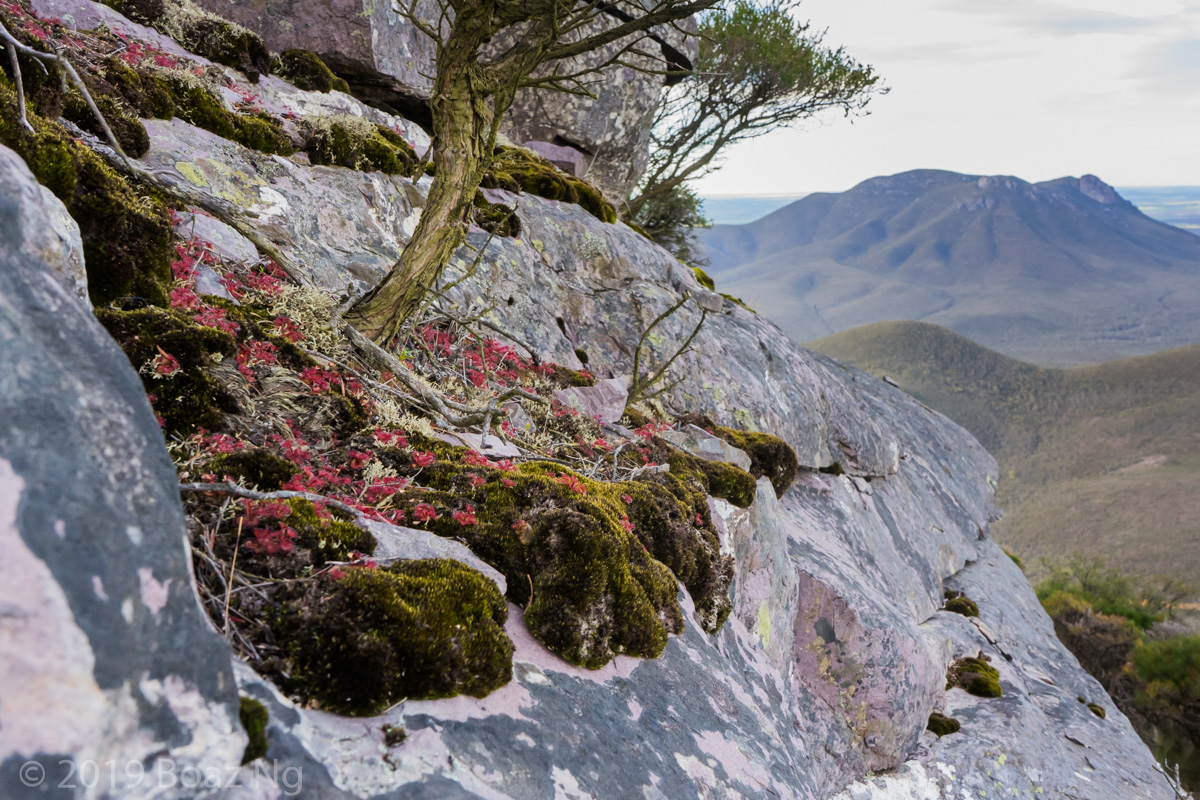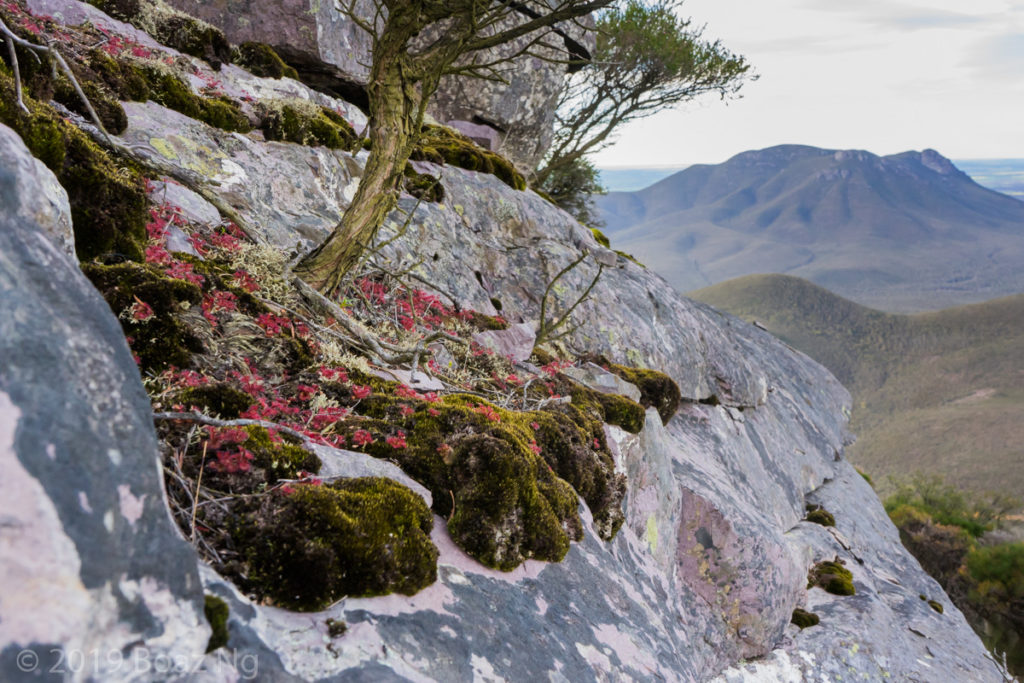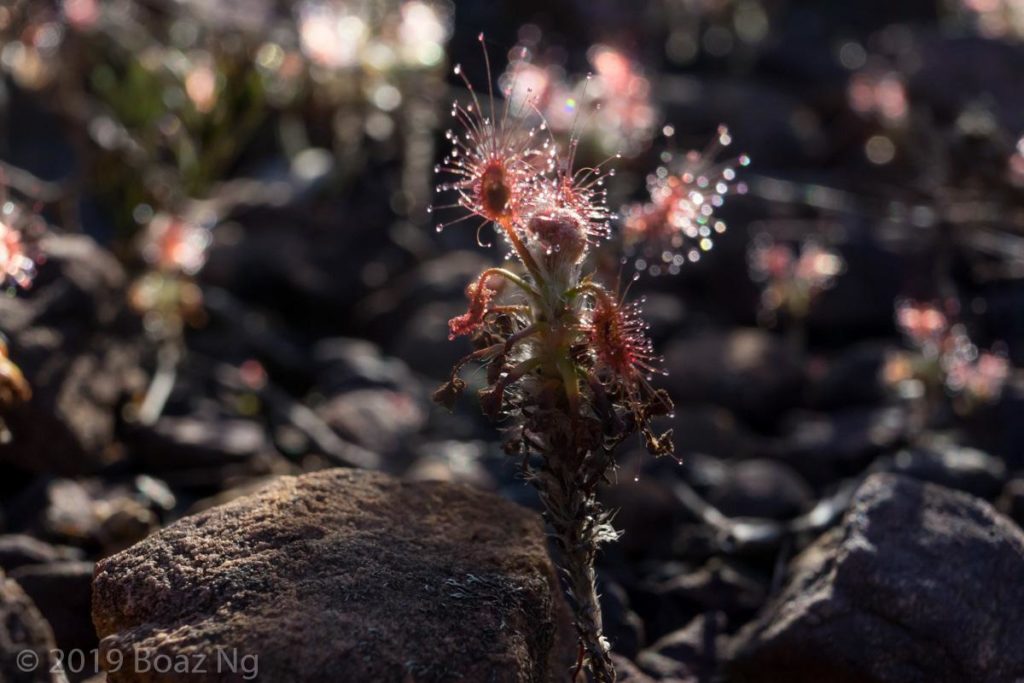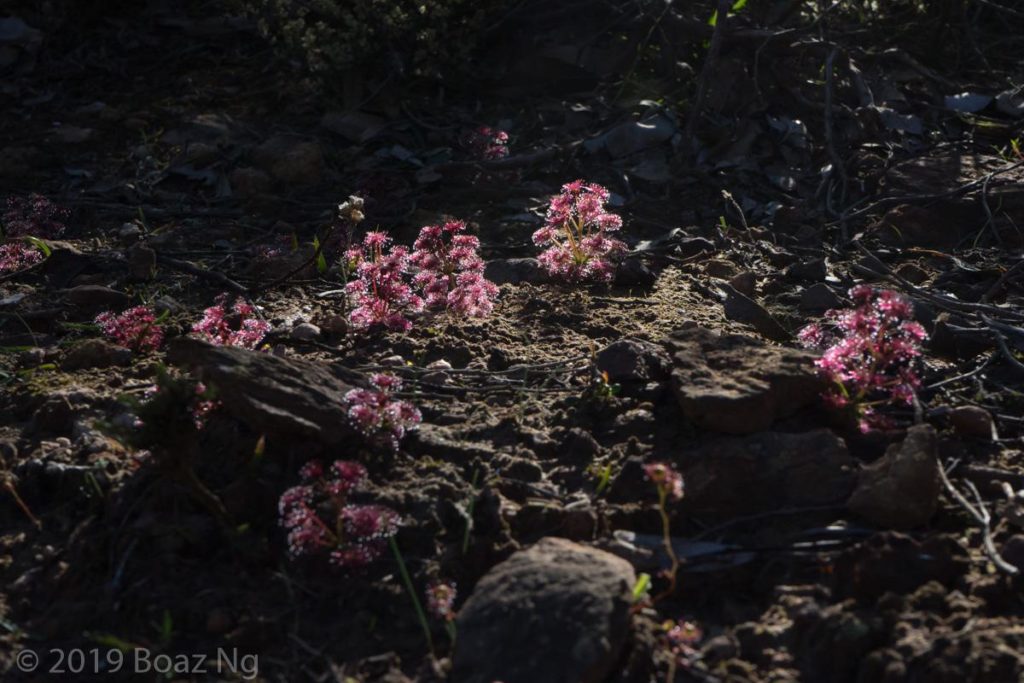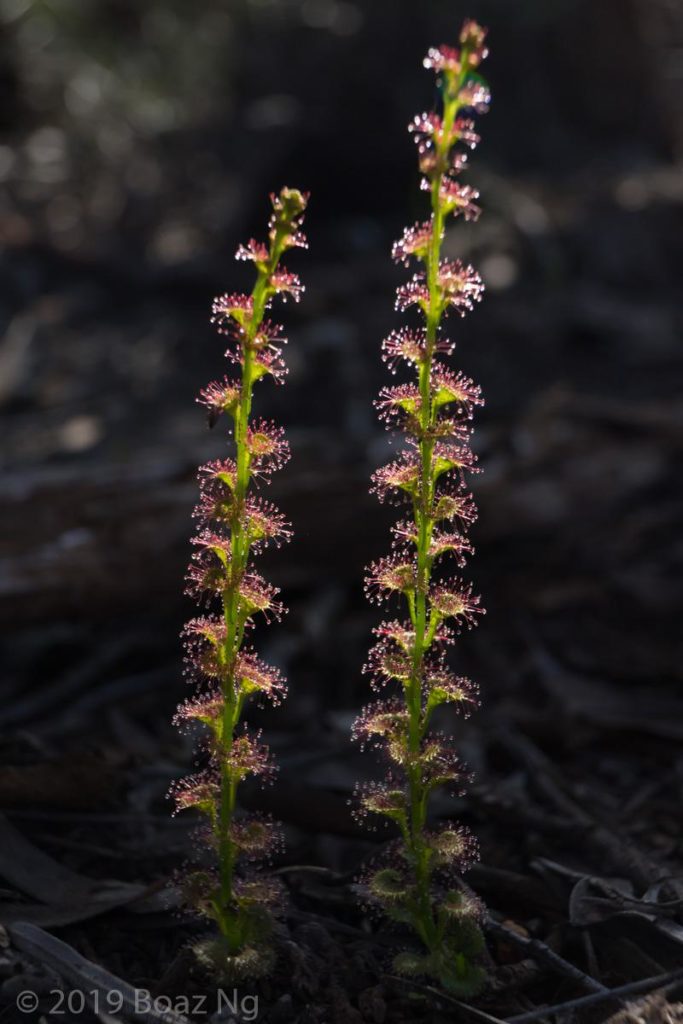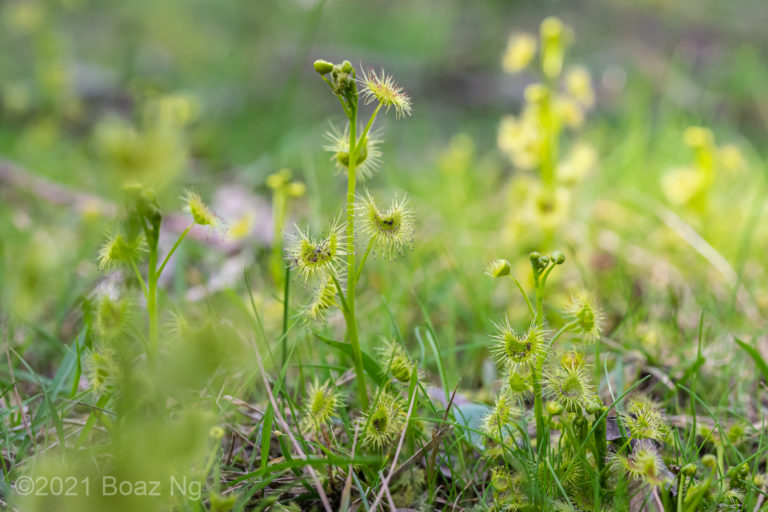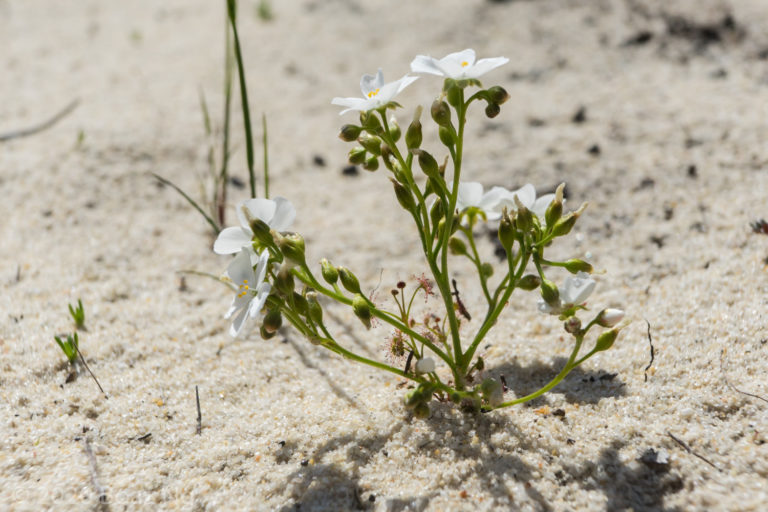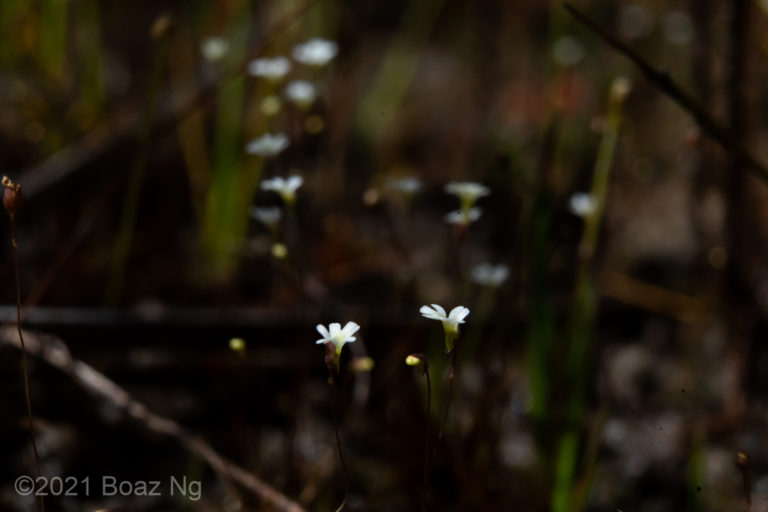At the end of winter in 2019 I embarked on an expedition to document the carnivorous plants of Western Australia. Over 17 days, I drove almost 3,500 km and photographed over 50 species in their habitat.
Previous: Part 3. Southern Swamps
As we drove further inland, the profile of impressive standalone mountains started appearing on the horizon. Ancient geological uplift has pushed these gigantic peaks high around the surrounding plains, forming ‘islands’ of elevated habitat that are spatially segregated from each other. This isolation gives rise to high rates of endemism amongst the flora in this region.
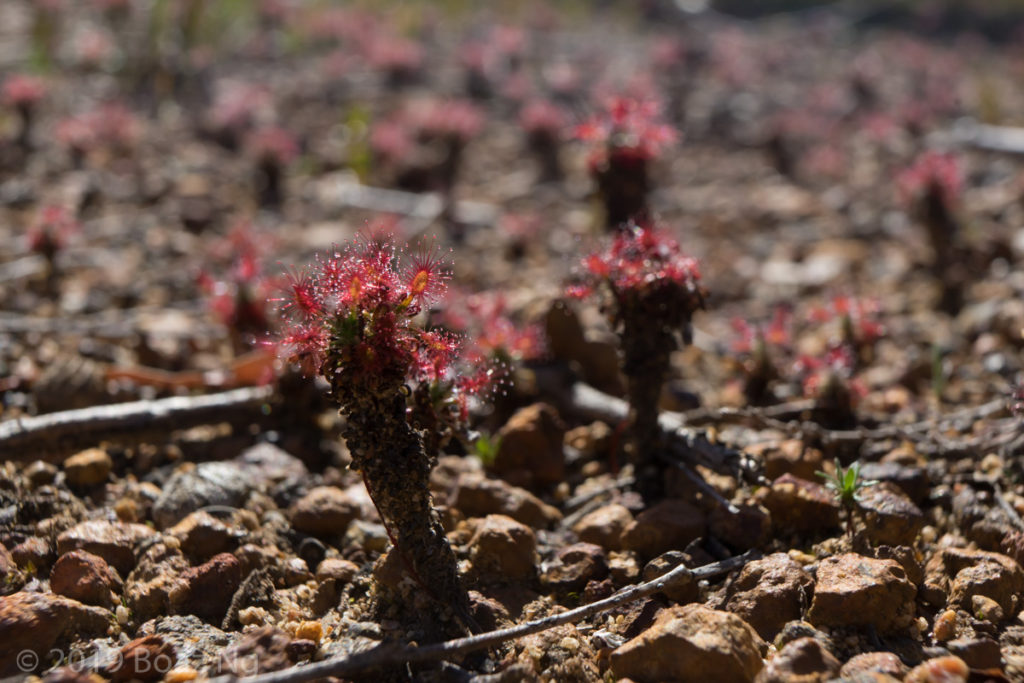
Drosera lasiantha 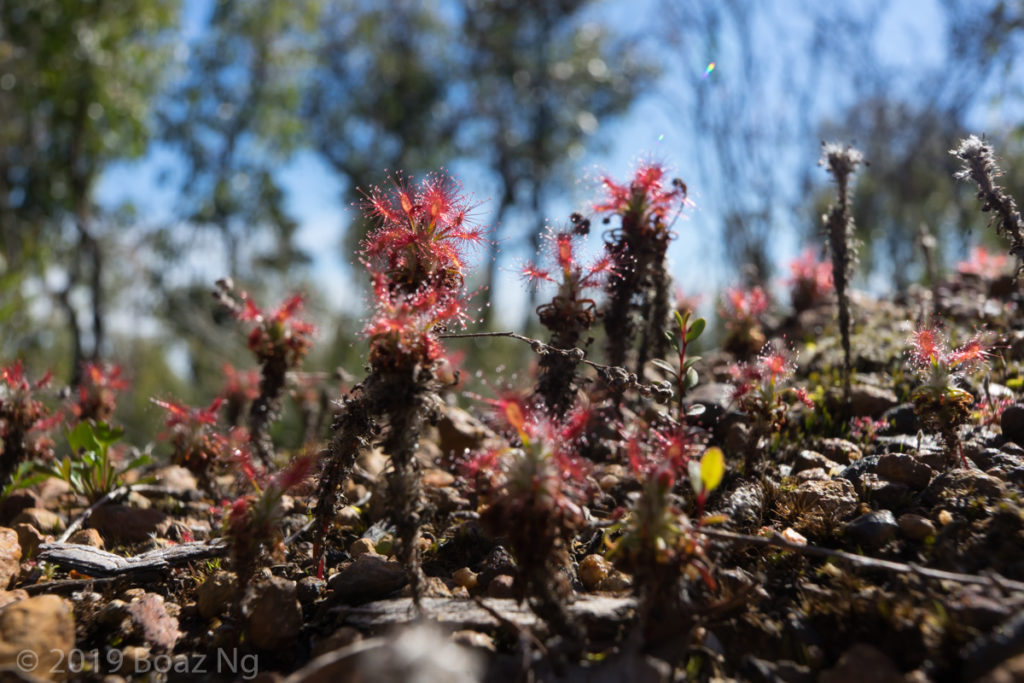
Drosera lasiantha
The main activity for today was the Porongurup National Park, where we planned to hike to the top of the impressive granite domes in the range. However, we firstly made a stop in the lower slopes of the area in search for the extremely localised pygmy sundew, D. lasiantha. This species grows only here and in a neighbouring national park, occupying laterite slopes. To be honest, my hopes for finding this rare plant weren’t particularly high, so I was especially thrilled when I saw many thousands of them colonising a cleared stretch of ground within seconds of leaving the car. The species is notable for its long stem, which stretches over 10 cm high in the oldest specimens – gargantuan in pygmy terms! I also enjoyed the raised profile of the leaves, as well as small details such as the long supporting roots that keep the plants upright.
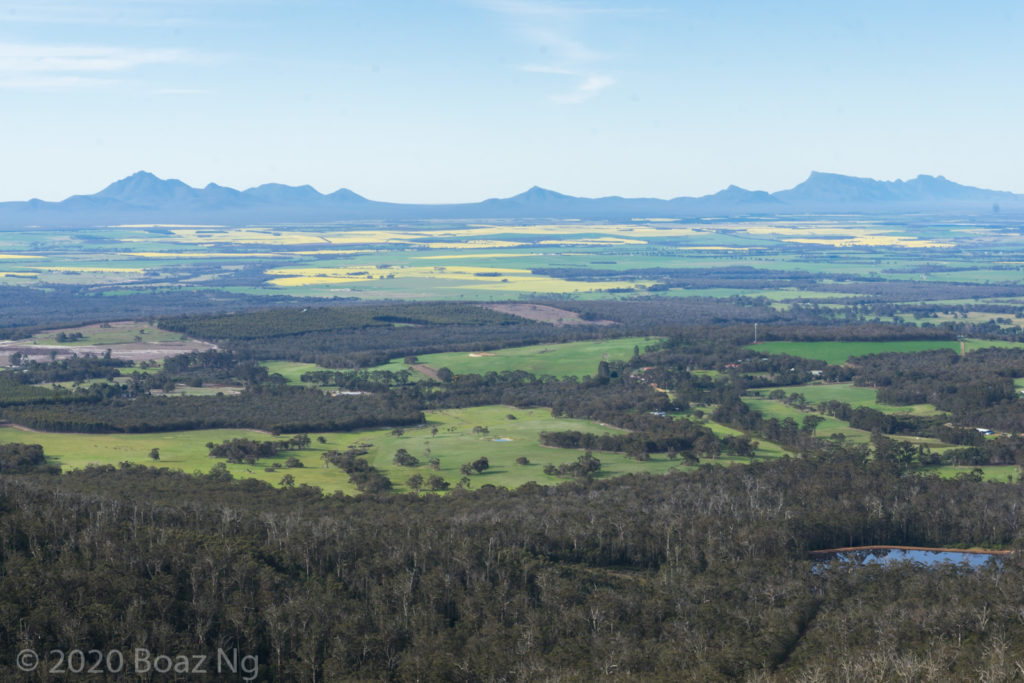
After spending some time taking photos, we made a start on the Nancy Peak circuit that took us to the top of the ranges. I thought I would be able to find many unique sundews throughout the transition from dense forest to exposed mossy summits, especially given the great number of plants I had seen on the granite outcrops in the past few days, but was disappointed to see that there seemed to be more invasive plants than native ones. I found a few D. glanduligera and D. macrantha here and there but the only thing noteworthy about the hike was the admittedly beautiful view.

Drosera erythrorhiza 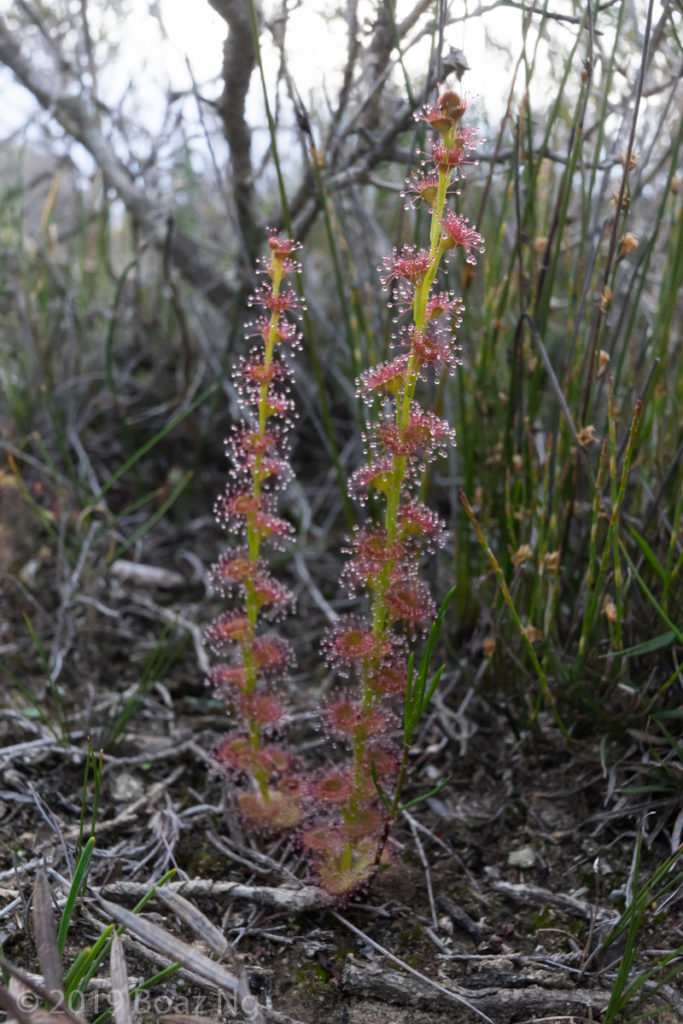
Drosera platypoda
Afternoon was creeping in as we finished the walk, and we were due at the other side of the Stirling Range National Park by dark! Hurriedly, we drove onwards, hopeful to find more productive carnivorous plant sites than the Porongurup Range. As we crossed into the boundary of the national park, the landscape abruptly changed from farmland to beautifully undisturbed indigenous shrubland which stretched for many kilometres afront. In the distance, tall peaks rose from the plains, their dramatic profiles endowing a great sense of adventure and character to the area. The region is a centre of biodiversity, with the dramatic shifts in elevation leading to the development of many unique niches and correspondingly high density of species.
Hopping off at a pitstop, I immediately saw the long spiralling stems of D. platypoda growing alongside the compact D. purpurascens. It was interesting to see two species in the stolonifera complex with completely different morphologies side by side. Intertwined in the bushes were scrambling stems of D. drummondii and D. pallida and as always, D. erythrorhiza colonised the ground in impressive numbers. The sight of so many species in such a natural setting was rejuvenating and with a sense of gratification, we finally found our way to our accommodation and promptly fell asleep.
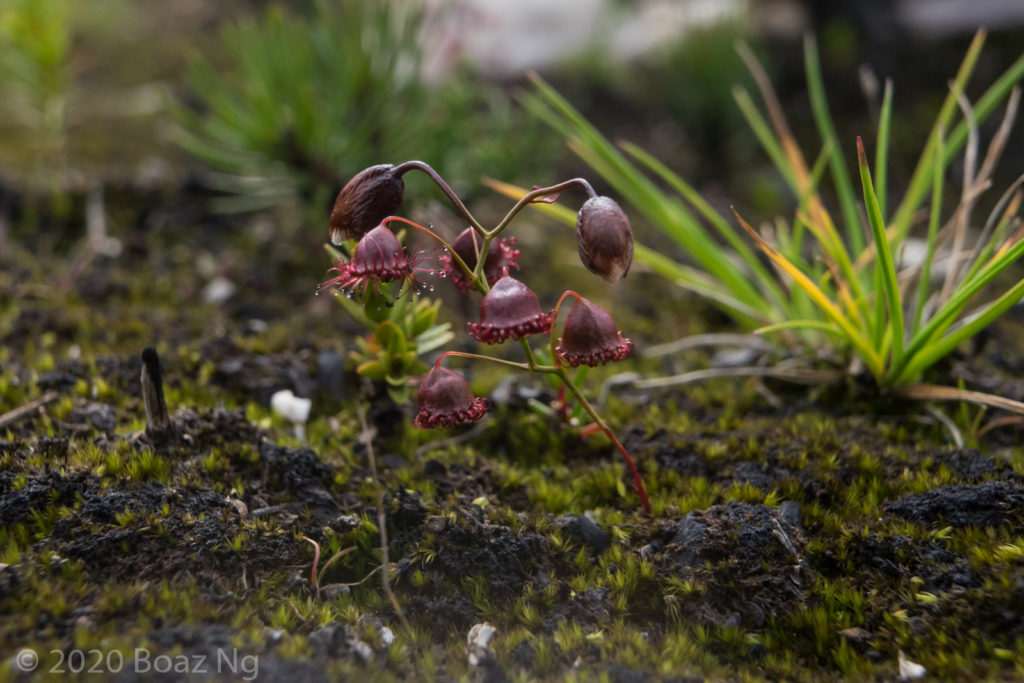
Drosera huegelii var. philmanniana 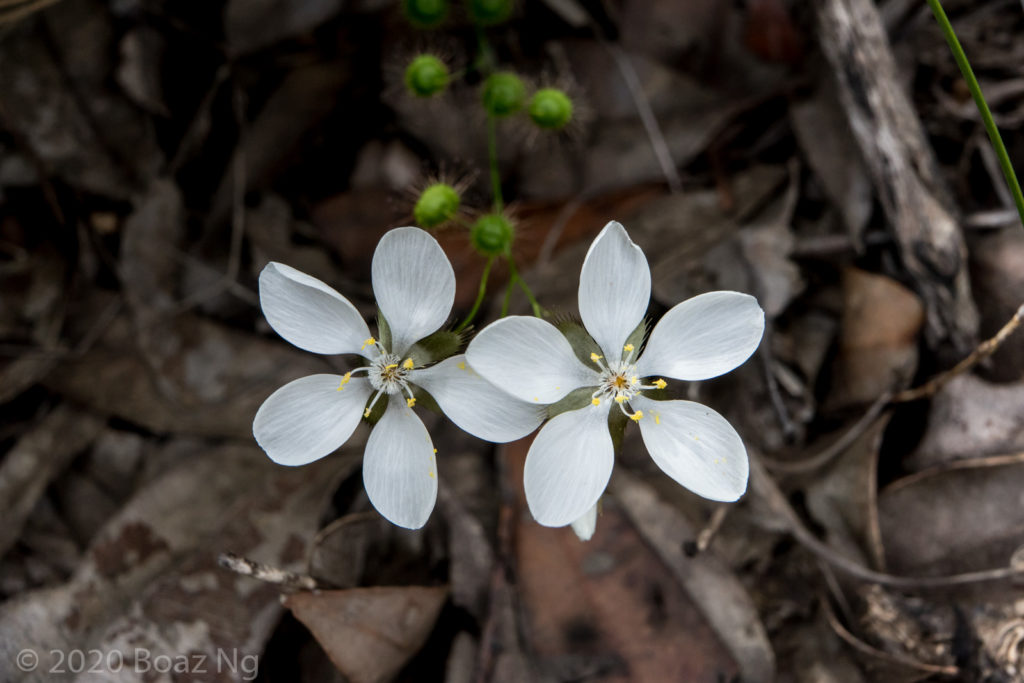
Drosera huegelii var. philmanniana 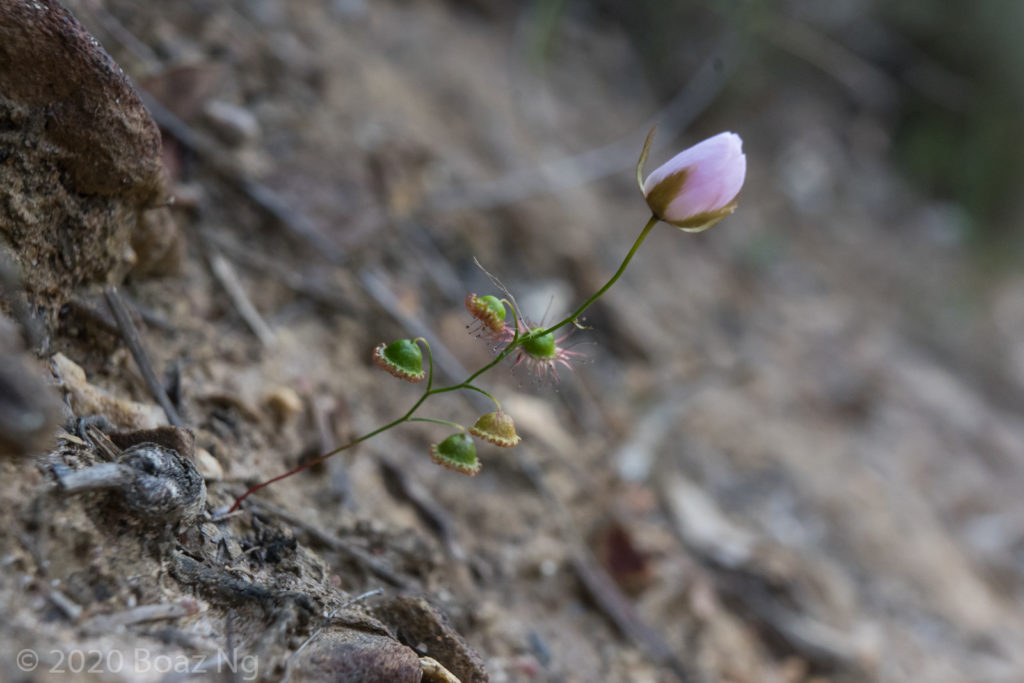
Drosera huegelii var. philmanniana
The following day we arose to summit Bluff Knoll, the highest point in the south west at 1,099 m above sea level. In testament to its height, snow had fallen a few weeks prior and the transition between the lower slopes to the extensive summit plateau is host to many interesting species of sundews. Immediately around the carpark, we noticed patches of the ubiquitous D. macrantha and D. erythrorhiza on the rocky ridge. Despite the bitter cold of the morning, our blood quickly began pumping as we hiked up the mountain. Along the steeper sections of the trail grew the interesting D. huegelii var. phillmanniana. This diminutive variation of the species grows only a few leaves on a short stem but retains a proportionally oversized flower.
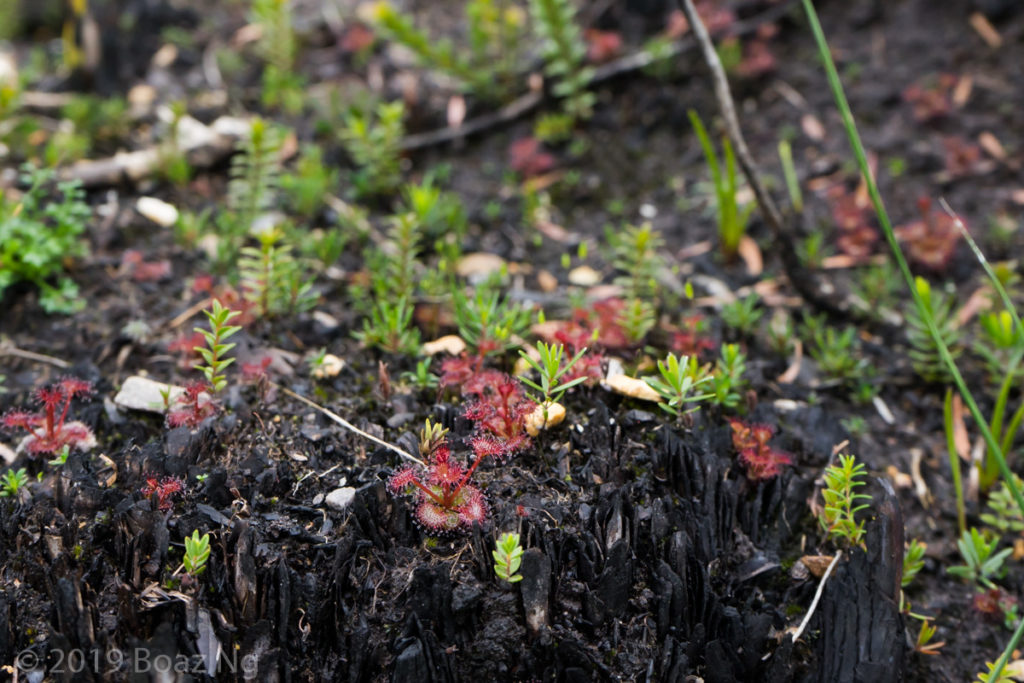
Drosera monticola on the burnt out Bluff Knoll. 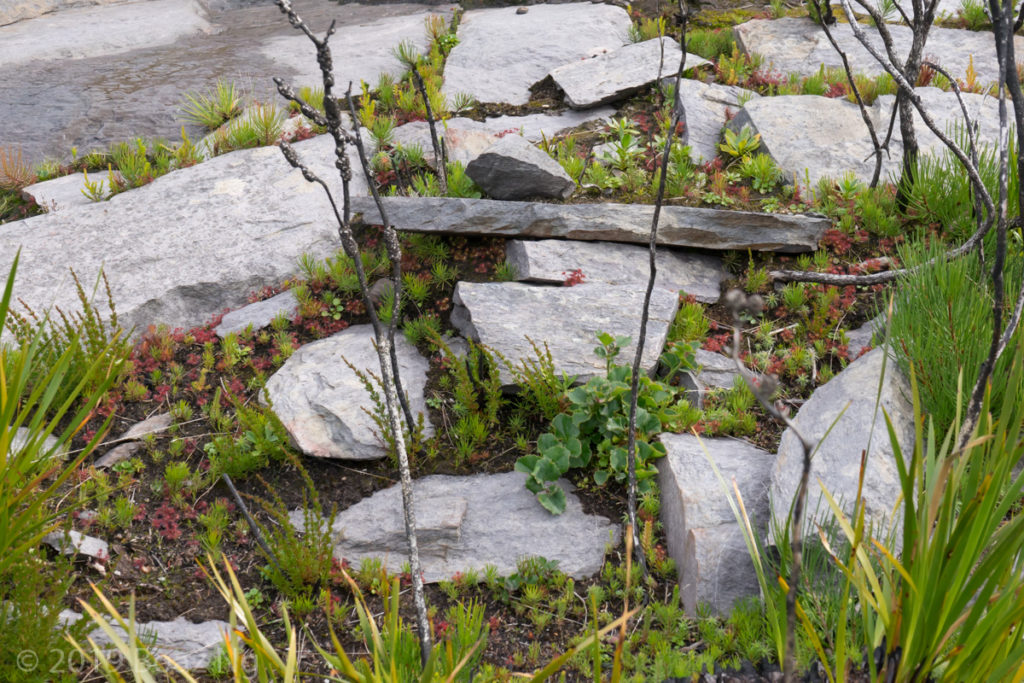
Drosera monticola on the burnt out Bluff Knoll. 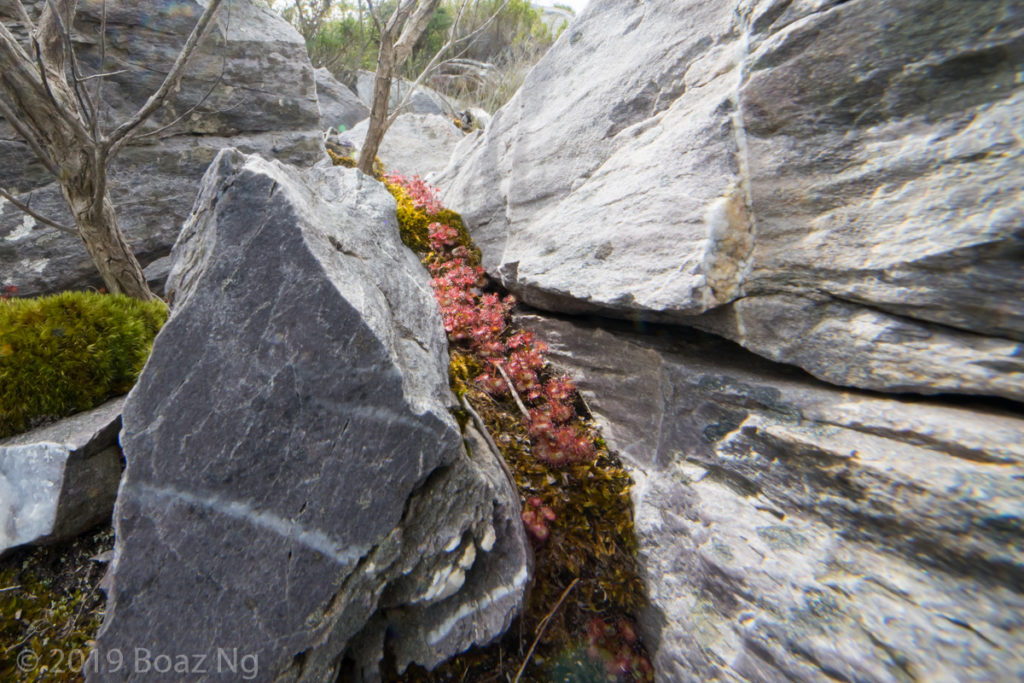
Drosera monticola on the burnt out Bluff Knoll.
After almost two hours of rather steep walking, we finally broke out of the forest and onto the summit plateau. I noticed that the entire area was charred from a bushfire a year prior and that the vegetation had only just started to regrow. Immediately, my eyes were drawn to the small sparkling red rosettes that stood out against the black charcoal. I was delighted to see that these were countless plants of D. monticola! This fan-leaved species is endemic to the highest peaks of the Stirling Range, typically growing in exposed moss patches on the weathered rock. The fires had cleared the undergrowth, exposing the soils to light and stimulating the dormant plants and seed to germinate en masse. It was amazing seeing this species, which was certainly on my bucket list, growing in such numbers.
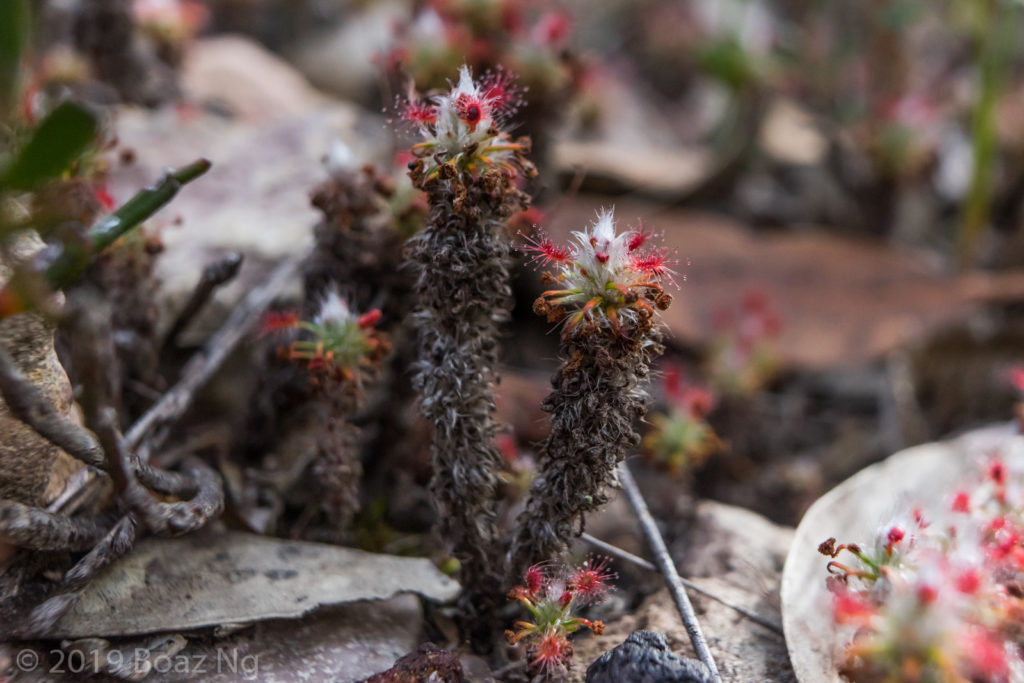
Drosera gibsonii, a very endemic species with long stems. 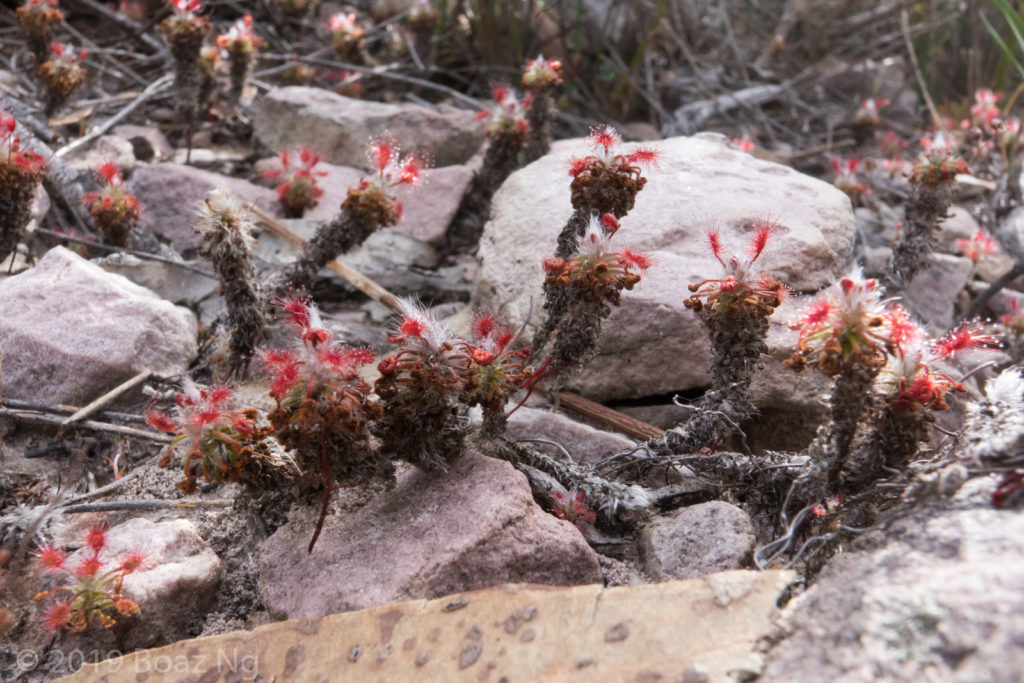
Drosera gibsonii, a very endemic species with long stems.
We broke for lunch and photos, before navigating back down to the carpark, but our day was not complete yet. I had gotten a tip about the location of another very endemic species growing on a neighbouring peak and with admittedly sore legs and waning enthusiasm, we made our way to the next site. The hike started through lateritic slopes and climbed steadily upwards through heath. My vigour was soon restored when I spotted D. gibsonii on the side of the trail! This pygmy species is somewhat similar to D. lasiantha in morphology, with towering stems of old growth and an attractive raised rosette. Likewise, it has a very restricted distribution and grows only in the Stirling Range.
Following a bit more climbing, the heath suddenly ended and was replaced by the exposed rocky cap of the mountain. Gingerly, I scrambled on the bare rock and glanced over the usual D. glanduligera, which somehow colonises even the most remote locations, but then my eyes noticed the familiar red glimmer … of D. monticola? I was completely not expecting to see this species here as my research had indicated that it only grew on the summits of Bluff Knoll and Mt Toolbrunup. As I carefully scrambled along the steep cliff walls, I noticed many specimens growing in the moss gardens on the water seepages. In contrast to Bluff Knoll, there were limited plants alongside the track, perhaps because this peak had not burned recently and the vegetation was too dense to support sundews. Looking at the grand views before me, I wondered what other Drosera lay undiscovered on the many inaccessible peaks that dotted the range.
After a long day trekking up two peaks we finally returned to our lodging and got our first full night’s rest in a few days. The next morning, we made our way through the Stirling Range Drive, a 40 km stretch of gravel road that traverses the park. Still a bit sore from the previous day’s hikes, this option allowed us to see a wide variety of habitats along the way with minimal walking. The first section of the road took us through some laterite hills, where I excitedly sighted D. scorpioides, one of the larger pygmy sundews. Its leaves, which are reflexed upwards like a scorpion’s tail, are presented upon an imposing raised stem – a truly fearsome plant, if it were not for its small size!

Drosera scorpioides 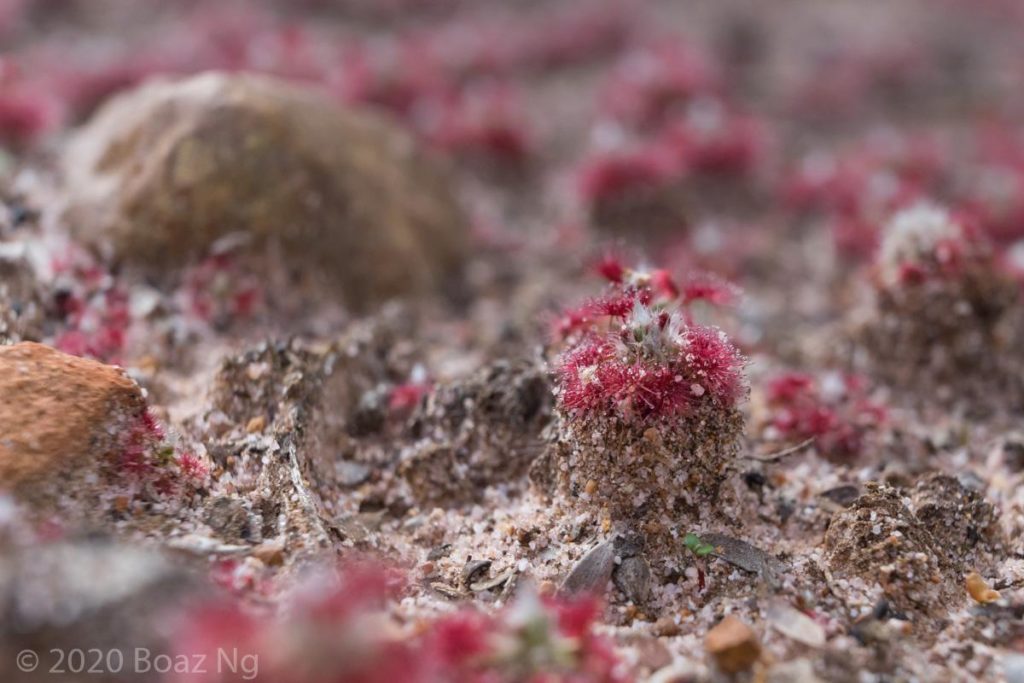
Unidentified Pygmy Drosera 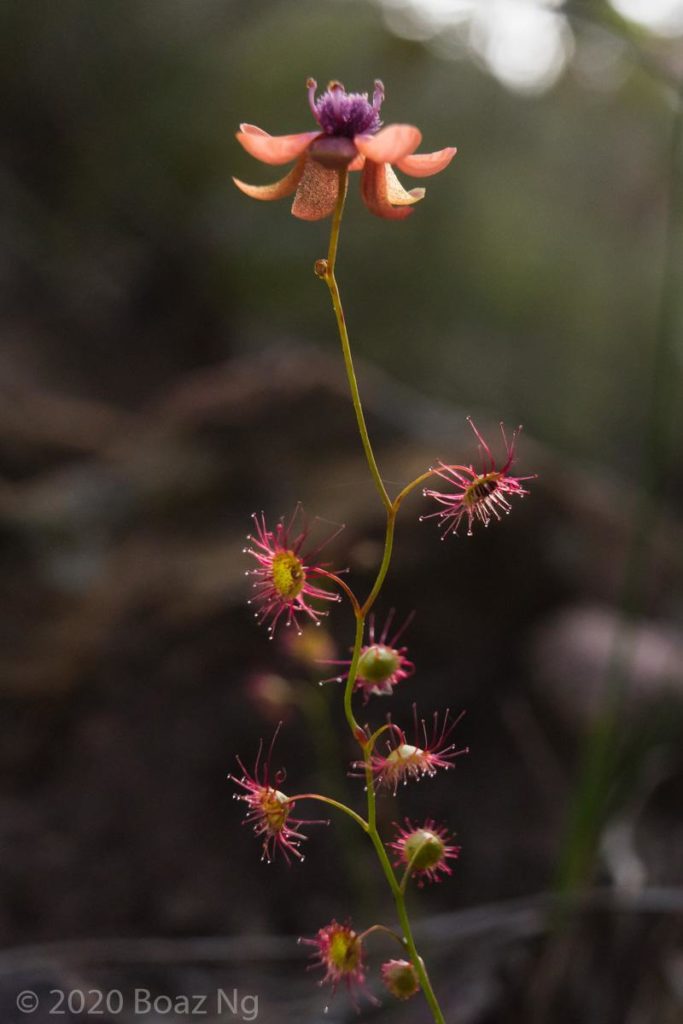
Drosera microphylla
We took our day slowly, pausing at all the scenic lookouts and generally enjoying the stunning floral and geographic beauty of the national park. On a heathy hill, I found the stunning orange flowers of D. microphylla, more D. scorpioides and an assortment of other unidentifiable pygmy Drosera. By afternoon, we were near the end of the drive and stopped at a grassy woodland section in a valley. In contrast to the dry exposed heathland, this lush shaded area yielded plants similar to the forests of the south west region with the appearance of the scrambling D. pallida and D. macrantha. In homage to its specific name, the latter species had large blooms which interestingly had a pink coloration.
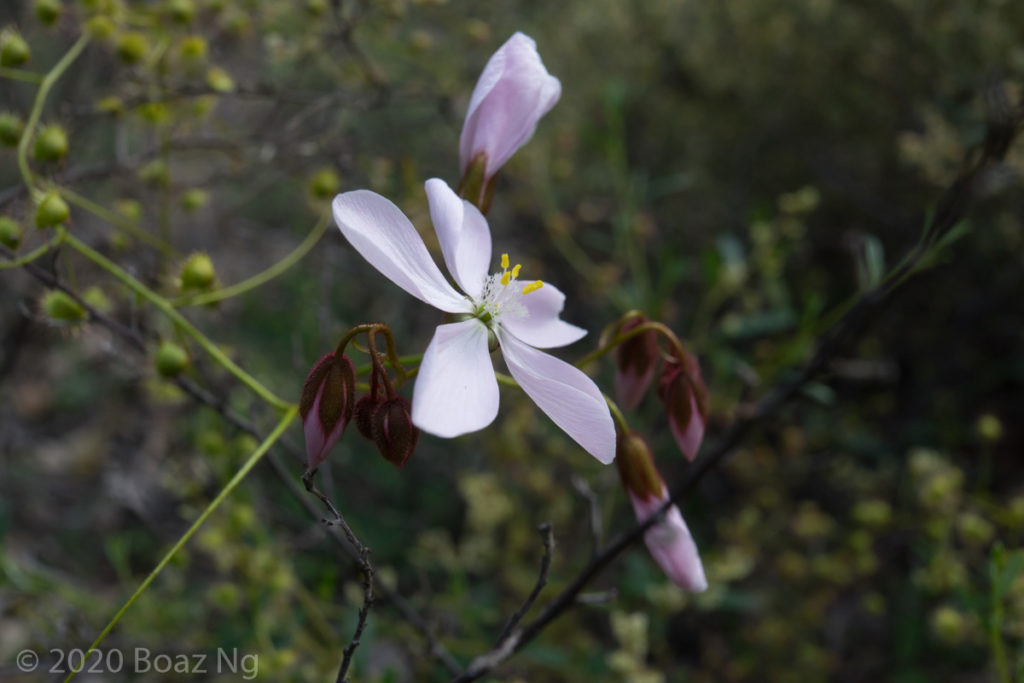
Drosera macrantha 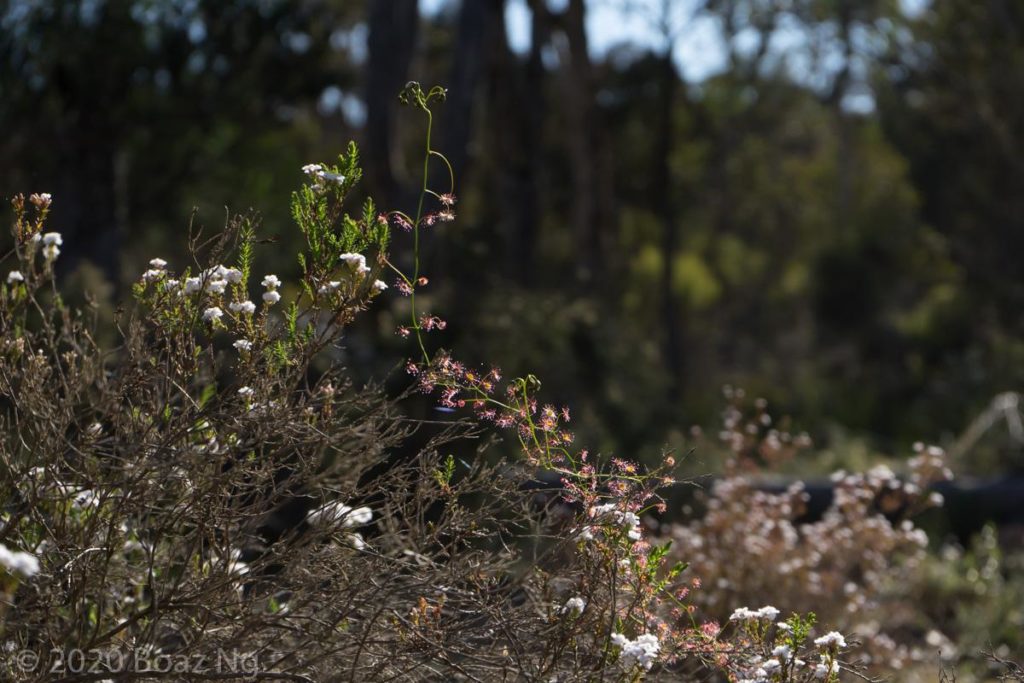
Drosera pallida 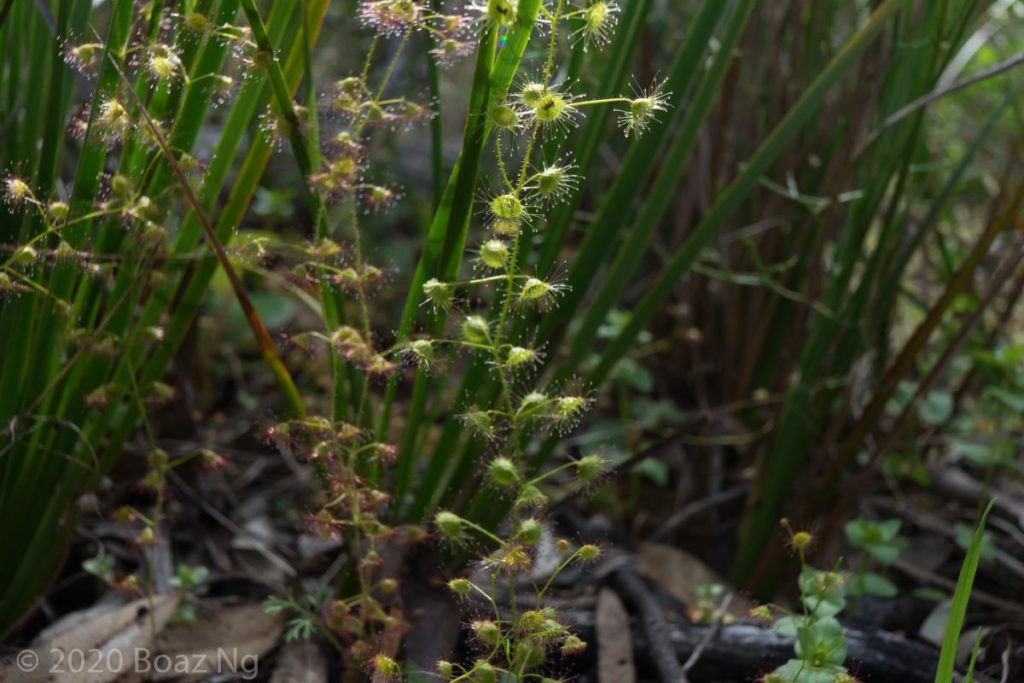
Drosera macrantha
Afterwards, we exited the national park and drove towards the charming regional centre of Albany, where Peter was due to fly out the following morning. As we reached the coast, it started drizzling and we were left wondering if we should just check in at the hostel and call it a day.
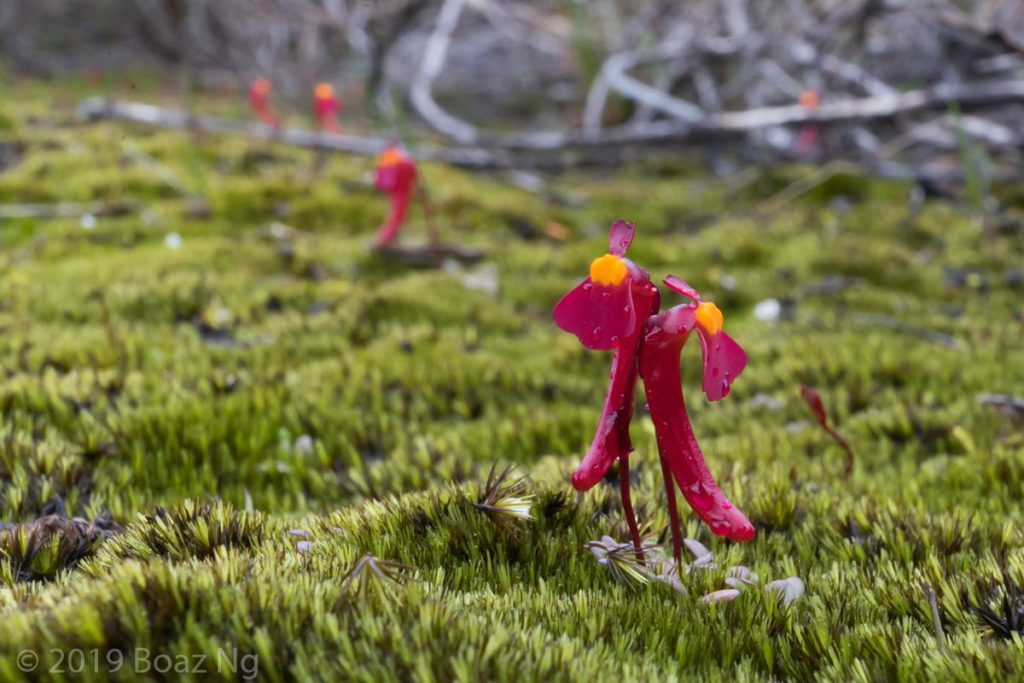
Utricularia menziesii 
Utricularia menziesii
Of course, I wanted to do some more exploring, especially after getting notification that a certain species of bladderwort was still blooming in the coastal granite outcrops in the region. Gently coercing Peter to drive into Torndirrup National Park, my eyes soon locked onto the massive rock platforms, exposed to the surface by wind and rain. Donning my raincoat, I quickly made my way onto the outcrops before the storms on the radar hit. I soon saw bright spots of red amongst the moss and was ecstatic to see U. menziesii in full bloom! This bladderwort is notable enough to have a common name – the ‘redcoat’ – a homage to the long hanging protuberance of its bloom that is reminiscent of the tail jackets of colonial British soldiers. The perennial species is uniquely adapted to the Australian climate, forming a resting tuber to survive the annual desiccation of its niche.
As luck would have it, the rains bypassed us, and the skies cleared up. We had a nice dinner in Albany (which was especially luxurious after a week of hostel cooking) in celebration of a successful expedition, and I saw Peter off on his flight back to Melbourne. But the trip was not even halfway through for me. And now I was on my own …

